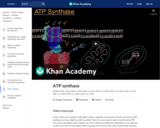
ATP synthase and its role in mitochondria during respiration and chloroplasts during photosynthesis.
- Subject:
- Biology
- Life Science
- Material Type:
- Lesson
- Provider:
- Khan Academy
- Provider Set:
- Khan Academy
- Author:
- Sal Khan
- Date Added:
- 10/23/2018

ATP synthase and its role in mitochondria during respiration and chloroplasts during photosynthesis.

Biology is designed for multi-semester biology courses for science majors. It is grounded on an evolutionary basis and includes exciting features that highlight careers in the biological sciences and everyday applications of the concepts at hand. To meet the needs of today’s instructors and students, some content has been strategically condensed while maintaining the overall scope and coverage of traditional texts for this course. Instructors can customize the book, adapting it to the approach that works best in their classroom. Biology also includes an innovative art program that incorporates critical thinking and clicker questions to help students understand—and apply—key concepts.
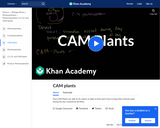
This 9-minute video lesson looks at how CAM Plants are able to fix carbon at night so they don't have to keep their stomata open during the day. [Biology playlist: Lesson 34 of 71].
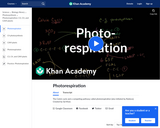
This 17-minute video lesson provides more detail on the Calvin Cycle and Photorespiration. [Biology playlist: Lesson 32 of 71].
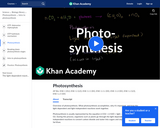
This 14-minute video lesson presents an overview of photosythesis. [Biology playlist: Lesson 28 of 71].
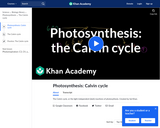
This 13-minute video lesson covers the Calvin Cycle or the light-independent (dark) reactions of photosythesis. [Biology playlist: Lesson 31 of 71].
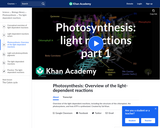
This 20-minute video lesson presents details on the light-dependent reactions of photosynthesis. [Biology playlist: Lesson 29 of 71].

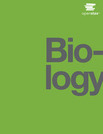
This course is the introduction to the ... Biology is designed for multi-semester biology courses for science majors. It is grounded on an evolutionary basis and includes exciting features that highlight careers in the biological sciences and everyday applications of the concepts at hand. To meet the needs of today’s instructors and students, some content has been strategically condensed while maintaining the overall scope and coverage of traditional texts for this course. Instructors can customize the book, adapting it to the approach that works best in their classroom. Biology also includes an innovative art program that incorporates critical thinking and clicker questions to help students understand—and apply—key concepts.

Biology is designed for multi-semester biology courses for science majors. It is grounded on an evolutionary basis and includes exciting features that highlight careers in the biological sciences and everyday applications of the concepts at hand. To meet the needs of today’s instructors and students, some content has been strategically condensed while maintaining the overall scope and coverage of traditional texts for this course. Instructors can customize the book, adapting it to the approach that works best in their classroom. Biology also includes an innovative art program that incorporates critical thinking and clicker questions to help students understand—and apply—key concepts.


By the end of this section, you will be able to:Discuss the ways in which carbohydrate metabolic pathways, glycolysis, and the citric acid cycle interrelate with protein and lipid metabolic pathwaysExplain why metabolic pathways are not considered closed systems

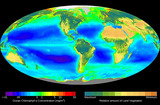
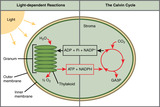
By the end of this section, you will be able to:Explain the relevance of photosynthesis to other living thingsDescribe the main structures involved in photosynthesisIdentify the substrates and products of photosynthesisSummarize the process of photosynthesis

By the end of this section, you will be able to:Explain how plants absorb energy from sunlightDescribe short and long wavelengths of lightDescribe how and where photosynthesis takes place within a plant

By the end of this section, you will be able to:Describe the Calvin cycleDefine carbon fixationExplain how photosynthesis works in the energy cycle of all living organisms
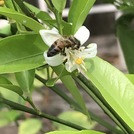
Active Learning Activity: Think-Pair-Share

Seeing how light energy can excite electrons which can be used to create ATP and NADPH (with oxygen as a byproduct).
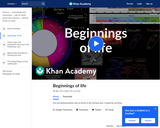
This 10-minute video lesson looks at the beginnings of life on Earth. Life and photosynthesis start to thrive in the Archean Eon. [Cosmology and Astronomy playlist: Lesson 39 of 85]